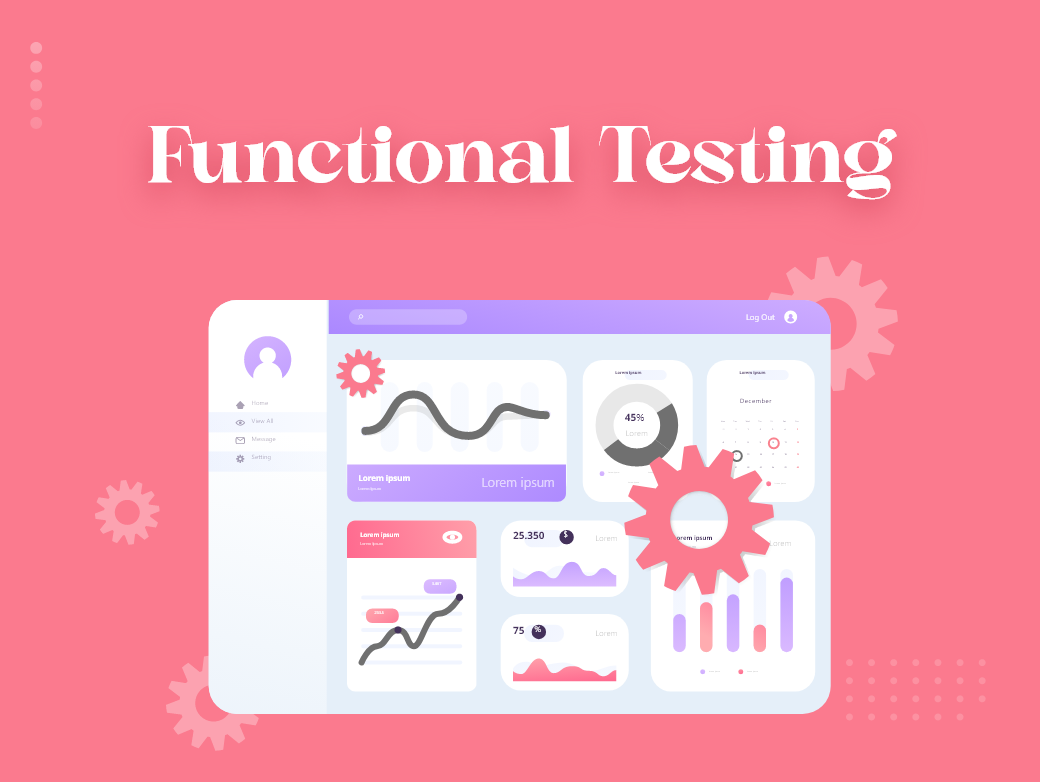What is Functional Testing in Software?
Functional testing in software is a vital process to verify whether the application’s features and functions align with the specified requirements. The goal is to check each functionality by providing input values and validating the outputs against the expected results. This process ensures that all elements work correctly, as intended. Functional testing primarily evaluates the system’s features, user interactions, and system responses under different scenarios and conditions.
At AssortTech, we specialize in Scalable Custom Software solutions, helping businesses ensure their applications perform flawlessly with comprehensive functional testing. Our Business & Enterprise Solutions provide a robust framework for achieving optimal software performance.
Read More: Software Testing and Non-Functional Testing
Purpose of Functional Testing in Software
The primary goal of functional testing is to verify the validity of the system’s functions, ensuring that everything works as expected for users. It includes validating user inputs, testing interactions, and confirming that error messages guide users effectively. Key objectives of functional testing include:

- Testing Each Function of the Application
Every application function is tested by providing the right inputs and comparing the actual and expected results. - Testing the Primary Entry Function
Validating all input and output points of the application to ensure accurate data processing. - Testing the GUI Screen Flow
Ensuring smooth navigation across the application for an optimal user experience.
Key Areas to Test in Functional Testing
In functional testing in software, several aspects need to be validated, including:
- Mainline Functionality
Verify that features like buttons, forms, and links work as expected. - Input Validation
Ensure the application properly handles valid and invalid user inputs. - Integration
Test the seamless interaction between different components or modules of the software. - Error Conditions
Examine how the application reacts to errors or exceptions. - Accessibility
Ensure the software is accessible to users with disabilities. - Basic Usability
Evaluate the user interface for ease of use and navigation. - Compatibility
Test the software’s performance across various platforms, such as different operating systems and browsers.
Looking for Professional Software Testing Services?
Visit our Services page.
Have questions or need support?
Contact Us today.

Types of Functional Testing
Functional testing includes different types such as:
- Unit Testing
Validates individual modules of the application. - Integration Testing
Verifies interactions between various software components. - Smoke Testing
Confirms that basic functions are working before deep testing. - User Acceptance Testing (UAT)
Ensures the system meets client requirements before deployment. - System Testing
Tests the software as a whole for compliance with requirements. - Regression Testing
Validates that new changes do not affect existing functionality. - Black Box Testing
Focuses purely on functionality without inspecting the internal workings of the system.
Tools for Functional Testing in Software
Various tools are used for functional testing, including:
- Selenium
Popular for automating web application testing across browsers. - UFT (formerly QTP)
Ideal for automating tests for web and desktop applications. - SoapUI
Used for testing SOAP and web services. - JUnit
A framework for unit testing in Java applications. - Watir
A tool for automating web app testing using Ruby.
Best Practices for Functional Testing
To maximize the effectiveness of functional testing in software, follow these best practices:

- Automation
Automate repetitive tests to save time and improve accuracy. - Early Test Case Creation
Create test cases during the early stages of the project. - Prioritization
Focus on testing the most critical functions first. - Regular Testing
Perform regular automated testing to ensure continuous quality.
Pros and Cons of Functional Testing
Pros:
- Validation of Functionality
Ensures that the software functions as intended. - Improved Quality
Identifies issues early, improving software quality. - User-Centric Approach
Focuses on the end-user experience. - Risk Mitigation
Helps minimize the risks associated with functional failures.
Cons:
- Limited Scope
May not address non-functional aspects like performance. - Incomplete Coverage
Not all possible scenarios may be tested. - Cost and Time Constraints
Comprehensive testing can be resource-intensive.
Conclusion
Functional testing ensures that the software performs as expected by validating each function against the requirements. In the context of the Waterfall Model, functional testing plays a crucial role during the later stages of the development process, particularly after the design and implementation phases. Since the Waterfall Model follows a linear progression, functional testing is typically performed after the software’s design and coding are completed, allowing the team to verify that the application meets all specified requirements before moving to the next stage. This structured, step-by-step approach ensures thorough validation, reducing the risk of errors and ensuring that the final product aligns with user expectations.







